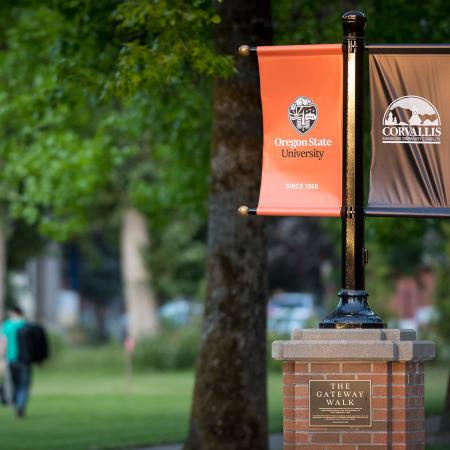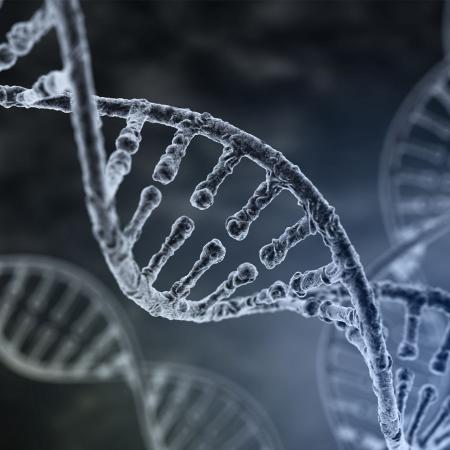Elisar Barbar, professor and head of the Department of Biophysics and Biochemistry, has received a two-year $300,000 grant from the National Science Foundation to pursue research on the SARS-CoV-2, the novel coronavirus that causes Covid-19. The research project is aimed at understanding how the N-protein of the SARS-CoV-2 performs its essential functions in viral infection and transmission. Associate professor David Hendrix and Rick Cooley, a research assistant professor in the Department of Biochemistry and Biophysics, are collaborators on the project.
The award was made by the NSF EAGER (Early-Concept Grants for Exploratory Research) program, which supports new, exploratory and potentially transformative research ideas or approaches that involve the application of new expertise and novel disciplinary or interdisciplinary perspectives.
“My lab is one of the few labs in the world that works on disordered proteins in viruses using NMR (Nuclear Magnetic Resonance Spectroscopy). This is an opportunity for us to lead and make an impact. We cannot afford to be spectators"- Elisar Barbar
The devastating global impact of Covid-19 has been unprecedented. The United States alone has reported 2.3 million coronavirus infections so far. Within a few months of its first appearance in the U.S., Covid-19 has killed more than 120,000 people. The pandemic shows little sign of abating as countries and states slowly begin to reopen, leading to spurts of new cases and new epicenters of disease outbreak. In this dire scenario, researchers are accelerating efforts to make sense of the coronavirus genome and its proteins, which could inspire drugs, therapies and vaccines to curb the pandemic.
Barbar’s research team will focus on one of the essential proteins encoded in the viral genome, the nucleocapsid N protein, which plays critical roles in multiple processes of the infection cycle: it is integral to the protection, packaging and assembly of the virus RNA, thereby creating a template for high levels of virus replication.
Revealing the structure and properties of the N-protein can open novel avenues of drug design to combat the Covid-19 pandemic and add new tools to the repertoire of anti-viral therapeutic strategies. Currently there are no specific anti-SARS-CoV-2 drugs in the market.
“We have a responsibility to use our knowledge and skills for good,” Barbar said. “My lab is one of the few labs in the world that works on disordered proteins in viruses using NMR (Nuclear Magnetic Resonance Spectroscopy). This is an opportunity for us to lead and make an impact. We cannot afford to be spectators.”
The goals of the project are to determine the structure and dynamics of SARS-CoV-2 N protein using high resolution techniques such as NMR, identify structural features of viral packaging using protein-RNA cross-linking and bioinformatic analyses, and determine the effect of phosphorylation (a mechanism by which the activity of proteins can be altered after they are formed) of N on its structure, its interactions with other proteins and its role as an RNA chaperone.
The researchers believe that this comprehensive approach to N-protein structure-function will enable development of innovative methods to block SARS-CoV-2 at different stages of its life cycle, thus inhibiting replication and transmission of the virus.
“The NSF project will use our 800 MHz NMR spectrometer and our expertise in intrinsically disordered proteins that is unique to OSU."
The coronavirus protein research extends Barbar’s very well-established research program in biochemical research on intrinsically disordered proteins (IDP). She and her team discovered that the intrinsically disordered state of the protein ASCIZ, a key transcription factor in cells, plays a major role in regulating production of the protein LC8, a hub protein regulating over 100 other proteins critical to a wide range of life processes from viral infection to tumor suppression to cell death. Her work on IDPs, a hot frontier of research in biochemical and medical research today, has far-reaching implications due to their critical role in a vast array of cellular functions.
Barbar is the faculty director of Oregon State University’s cutting-edge NMR Facility. She and her colleagues pursue interdisciplinary research using NMR, and their work has strengthened the university’s reputation as a center for biological excellence. NMR, a powerful imaging tool, supports significant research on protein folding, gene discovery and biochemical structural informatics at OSU and in Oregon.
“The NSF project will use our 800 MHz NMR spectrometer and our expertise in intrinsically disordered proteins that is unique to OSU,” Barbar said.
Genesis of the project
The Barbar Lab recently published a paper on rabies virus phosphoprotein, fueling further inquiry on whether the SARS-CoV-2 pathogen has a phosphoprotein that is similar to rabies, and whether it binds LC8. Graduate student Heather Forsythe investigated and found that the N-protein has a similar architecture to the rabies virus phosphoprotein. The discovery paved the way for more focused research and literature review by Barbar and her students.
“My graduate and undergraduate students presented papers, worked on figures, and practically wrote the proposal,” said Barbar. Subsequent discussions of the project during the Biochemistry and Biophysics Department’s monthly Science Talks helped to generate enthusiasm and led to an expansion of the project with Hendrix and Cooley joining the collaboration.
Hendrix’s research utilizes bioinformatic approaches and data mining to understand connections between RNA and disease. Cooley studies protein transformation and phosphorylation using amino acid genetic code expansion — a rapidly growing protein engineering technology that has been developed by Oregon State biochemists.
“The team brings powerful complementary approaches to bear on understanding the biochemical fundamentals of N-protein that underlie any drug treatment or vaccine strategy,” said Barbar.




